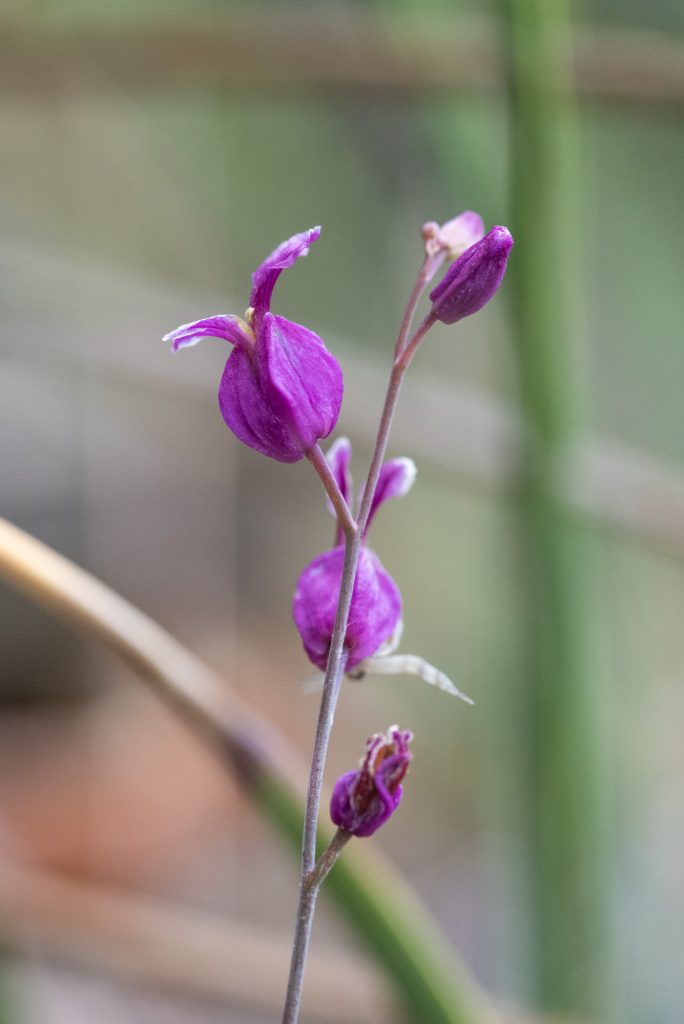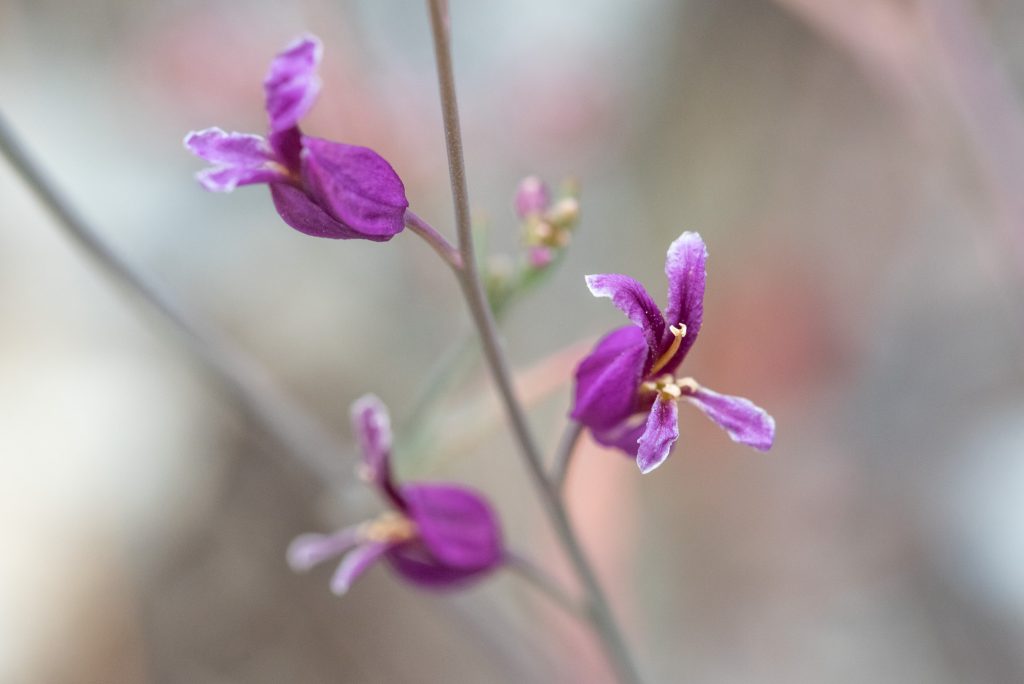Streptanthus albidus ssp. peramoenus
- Sensitive – U.S. Forest Service
- Rare Plant Rank 1B.2 – California Native Plant Society

Description and Natural History
Jewelflowers are a type of annual flower belonging to the mustard family, that primarily grow on serpentine soils in arid regions. There are more than 40 different species of jewelflowers, and while there are many beautiful jewelflowers, S. albidus peramoenus is officially called the “most beautiful” jewelflower.
This exemplary jewelflower is extremely rare, but if you’re having a lucky day, you might be able to find it on serpentine soils in open areas such as chaparral, valley grassland, and foothill woodlands, along a narrow band of the Santa Lucia Range in Monterey and San Luis Obispo Counties. The photos included here show a specimen found in an open serpentine outcrop in chaparral near San Luis Obispo.
The plant is a short annual (averaging at a modest few feet tall), so depending on when during the year you’re looking, you may find that the plant is dying off (although experts agree that even though the plant may be dying off, it is still a most beautiful jewelflower). However, if you really want to catch the most beautiful jewelflower at it’s most beautiful state, you’ll probably want to go between April and June when the plant is blooming. In the fall, the plant drops its seeds as it dies off. These seeds lay dormant through the winter and begin to sprout up in late winter with the rain.
Threats and Conservation Efforts
Unfortunately, the most beautiful jewelflower is an imperiled species, and is in danger of being extirpated (locally extinct) from its native range. Because of its limited distribution, the most beautiful jewelflower was added to the US Forest Service’s Watch List in 2003 and was recently elevated to the Sensitive Species list for the Los Padres National Forest. As a sensitive species, land managers must give this plant special consideration when deciding whether to approve certain land uses in the plant’s habitat.

The Forest Service has identified several threats and possible threats, including overgrazing from cattle, competition from non-native plants (like yellow starthistle), military training activities, feral pigs, too frequent fires, fires in wrong season, trampling, and dust. The US Forest Service currently has no specific conservation initiatives to protect the most beautiful jewelflower.
Here at ForestWatch, we’re doing everything we can to protect the most beautiful jewelflower and species like it by working to reduce overgrazing on public lands, stop illegal OHV trespassing, and provide trails for better public access to the forest. Additionally, we monitor land use permits to ensure that all approved activities do not impact sensitive species like the most beautiful jewelflower.






